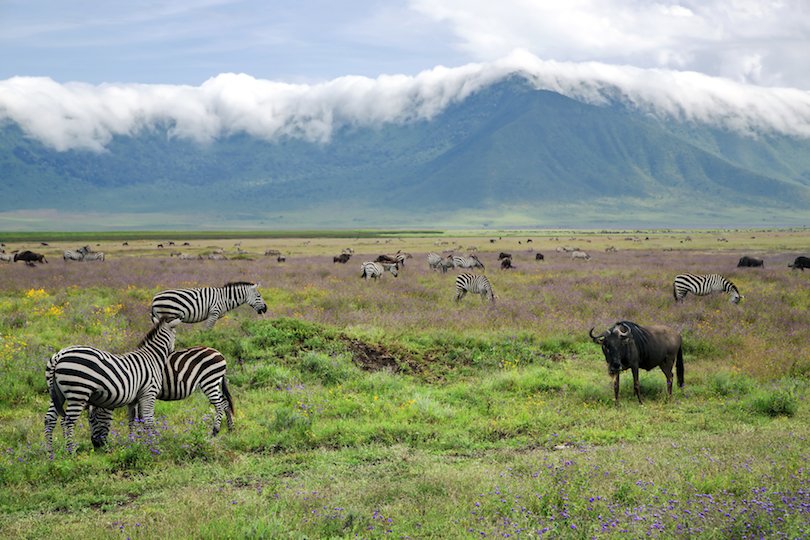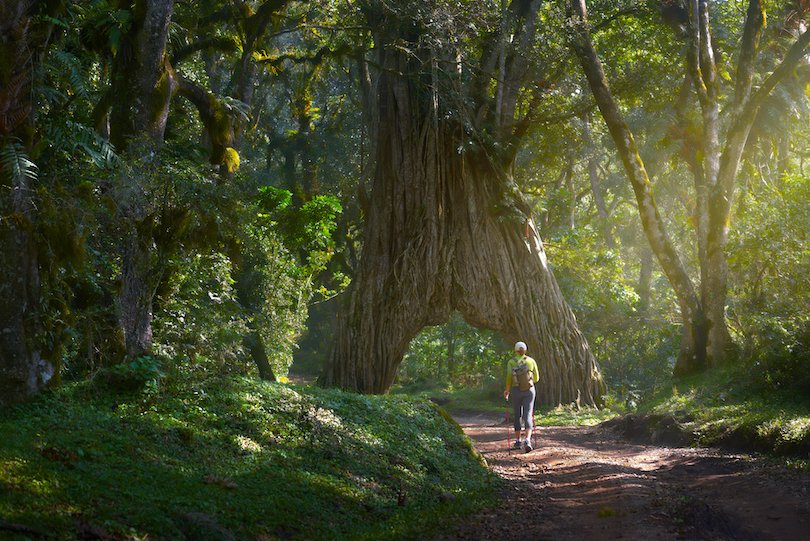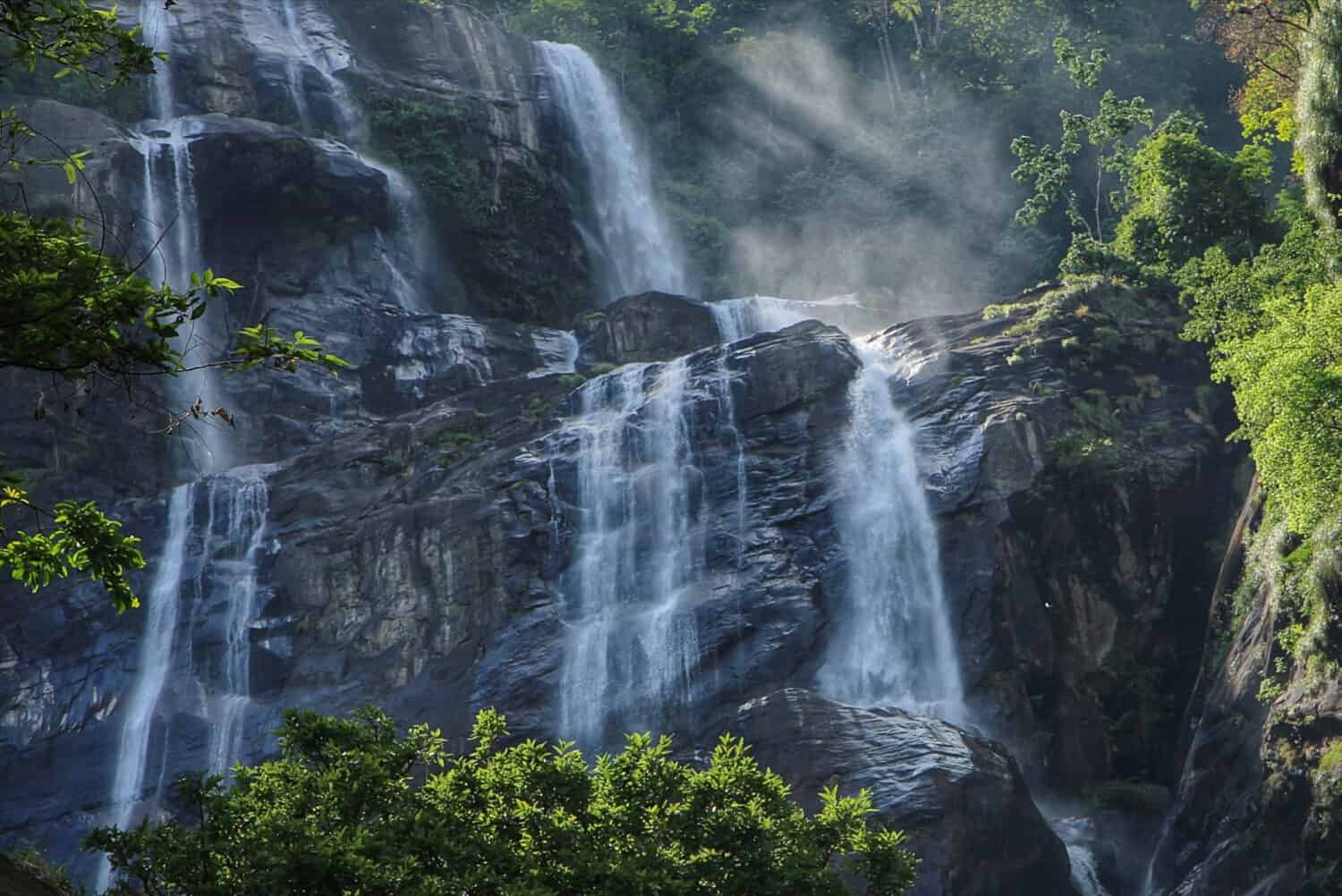12 Most Beautiful National Parks in Tanzania, is a sensory delight, boasting unparalleled natural beauty, exceptional wildlife viewing opportunities, and a rich cultural heritage. Its landscape is characterized by extremes, with mountains, lakes, grasslands, and rainforests all coexisting within the same area.
Tanzania is also home to some of the world’s best safaris, with sightings of the “Big 5” game animals – lions, leopards, rhinoceroses, elephants, and buffalo – being almost guaranteed. In addition to these wild animals, the Maasai people continue to graze their livestock, preserving their traditional, nomadic way of life in the modern world. It is no wonder that tourism is booming in this stunning East African country, and no trip is complete without a visit to one of Tanzania’s breathtaking national parks. Each park offers its own unique natural wonders, adventure activities, and cultural experiences that will leave even the most seasoned traveler in awe.
Lake Manyara National Park

Ernest Hemingway observed that this particular park boasted the most beautiful lake in Africa, and he may have been accurate in his assessment. Manyara Lake is truly breathtaking. It encompasses one-third of the park’s expanse, and despite its high salt concentration, it remains a safe water source for numerous animals in the region.
Moreover, it serves as the primary gathering place for vibrant flocks of flamingos and various other bird species. However, what truly sets Lake Manyara National Park apart is the presence of its tree-climbing lions. Researchers have yet to determine the exact reason behind these lions’ inclination to lazily rest among the branches, but regardless, witnessing such a spectacle is undeniably extraordinary.
Ruaha National Park

In 2008, Ruaha National Park expanded its borders, making it the largest national park in Tanzania. Presently, it is home to 10% of the global lion population and boasts the largest elephant population in Tanzania. The park’s breathtaking landscape comprises towering mountains that transition into expansive grasslands, rugged rock formations, and an intricate network of rivers. Among these, the Great Ruaha River, from which the park derives its name, stands as the largest.
The park’s visitors are enthralled by the vibrant red soil and iconic baobab trees, as well as the abundant presence of lions. It is not uncommon to witness prides of up to 25 lions, occasionally attempting to bring down a buffalo. Due to its relatively untouched state in terms of tourism, Ruaha National Park serves as a remarkable testament to Africa’s natural state throughout millennia.
Gombe Stream National Park

Jane Goodall’s Chimpanzee research in the 1960s put Gombe Stream National Park on the map. The park boasts steep forested mountains that slope down to Lake Tanganyika, as well as grasslands and warm tropical rainforests. Not only is this park an ideal location for close encounters with our closest relatives, but it also offers a wide range of flora and fauna to observe. The park is only accessible by boat, and visitors can snorkel in the lake to see some of the 2000 species of vibrant fish that inhabit it.
Mikumi National Park

The park is often referred to as the second Serengeti Plains due to its vast open horizons that offer unparalleled wildlife viewing opportunities. Visitors can witness impressive herds of zebra, wildebeest, buffalo, and impala roaming the grounds, while sightings of legendary giraffes, elephants, and lions are also common. The landscape is adorned with the iconic baobab trees, black hardwood trees, and grassy plains, and is nestled between three mountain ranges: The Uluguru, Rubeho, and Lumango Mountains. Additionally, the park is home to several primate research studies, most notably the yellow baboon field study.
Udzungwa Mountains National Park

The national park is home to a diverse range of flora and fauna, and its unique history has contributed to its incredible biodiversity. The Eastern Arc mountains were once covered in rainforest, but a colder and drier period transformed the area at the base of the mountains into a savanna, leaving the ranges as rainforest “islands”. This isolation has allowed for the emergence of four endemic primate species, one of which was only discovered in the 1970s. To fully experience the park, there are several treks of varying lengths and difficulties, some of which offer the opportunity to see stunning waterfalls and take a dip in small pools.
Ngorongoro Conservation Area Park

This park is truly unique, with only a few places on earth that can compare. It is not only home to the famous “Big 5” animals, but also boasts deep volcanic craters and serves as the habitat for the semi-nomadic Maasai people. Among these wonders, the Ngorongoro Crater stands out as one of Africa’s largest and most remarkable craters. The park’s landscape is a captivating blend of lakes, grasslands, swamps, and wooded areas, where both domesticated Maasai livestock and wild animals peacefully coexist.
Furthermore, the park has been a site of extensive archaeological research, leading to the discovery of fossilized footprints and providing exhaustive evidence of human evolution. Today, it continues to set a global standard for its exceptional conservation efforts.
Kilimanjaro National Park

The renowned Kilimanjaro Mountain attracts numerous visitors annually. Its unparalleled beauty and grandeur captivate all who lay eyes upon it. Whether observing it from within the mountain or from a distance, there is no denying that it is a breathtaking natural wonder.
Being the tallest mountain in Africa, it is a coveted adventure for many. Along the journey to the summit, one encounters rolling lowlands, fertile farmlands, and picturesque alpine regions. However, this legendary national park is no longer exclusive to seasoned trekkers; even first-time enthusiasts can embark on a trip to Kilimanjaro through less strenuous routes or opt for a day trip.
Serengeti National Park [SEE MAP]

This wildlife sanctuary is renowned for its exceptional wildlife observation opportunities. The annual movement of wildebeest and zebra, accompanied by their predators, is unparalleled and has served as a source of inspiration for countless individuals throughout history. The park’s name, bestowed by the Maasai people, translates to “serengit,” signifying the expanse of boundless plains. This designation accurately captures the essence of the park, as the uninterrupted short grasslands are occasionally punctuated by small rocky formations, rivers, and sparse woodlands.
The park is home to a remarkable variety of animals, including the renowned “Big 5,” and boasts one of the largest and most undisturbed migration patterns of its kind, unaffected by human interference.
Arusha National Park

Arusha National Park, although relatively small compared to other national parks in Tanzania, offers a remarkable experience. Its diverse vegetation, consisting of grasslands, rainforests, and alpine areas, creates the perfect habitat for a wide range of wildlife.
Within the park, you will find Mount Meru, one of Africa’s largest mountains, towering over the largest concentration of giraffes on the continent. The park is also home to various other animals such as waterbucks, buffalos, elephants, hippos, flamingos, and monkeys, which can be regularly spotted during your visit.
Despite its size, exploring the entirety of Arusha National Park can be done within a few hours. You can choose to embark on a walking safari or a canoe safari to fully immerse yourself in the park’s natural beauty. Many travelers make a stopover at Arusha National Park while en route to larger parks in Tanzania.
Mahale Mountains National Park

Mahale is renowned for possessing a couple of distinctive attributes that elevate its status as a remarkable park. Primarily, this park serves as a sanctuary for chimpanzees, providing a safe haven for nearly 2000 of these magnificent creatures. Additionally, Mahale is encompassed by the breathtaking Mahale Mountain range, revered by the local community as a sacred site, and is nestled along the shores of Lake Tanganyika. Notably, Lake Tanganyika holds the distinction of being the longest and second deepest lake, as well as the least polluted freshwater lake worldwide. The beach situated on the banks of Lake Tanganyika offers an awe-inspiring vantage point to witness the sun gracefully descend below the horizon.
Katavi National Park is one of the 12 Most Beautiful National Parks in Tanzania

Situated in the western region of Tanzania, Katavi showcases its captivating beauty during the dry season. In this period, the Katuma and Kapapa rivers become the sole lifeline for miles, attracting a multitude of animals in search of hydration. As visitors arrive, they are welcomed by the sight of numerous crocodiles peacefully resting in the mud, while massive herds of hippos gather around the water sources, and countless zebras grace the landscape with their presence.
Furthermore, it continues to be one of the most remarkable destinations in Tanzania for observing the captivating encounters between lions and buffalos. Owing to its secluded location, there is a limited number of visitors, allowing both tourists and locals to experience a pristine and unspoiled wilderness. Undoubtedly, this extraordinary location eagerly awaits exploration and discovery.
Tarangire National Park

Tarangire National Park is renowned for its annual migration of over 3000 elephants, but it offers much more than just that! This serene park provides year-round opportunities to observe four of the big five animals, and the local guides possess extensive knowledge about the migration patterns of the park’s wildlife, ensuring you a close encounter with these extraordinary creatures.
Regardless of the time of year, the park’s enchanting landscape is adorned with magnificent baobab trees and impressive termite mounds, resembling something out of a fairy tale. Adding to its allure, Tarangire National Park exemplifies the significance of national parks in Tanzania by serving as a sanctuary for endangered species such as the fringe-eared oryx, greater kudu, and Ashy Starling. These unique animals can only be found here in Tanzania, within the boundaries of Tarangire National Park.





